Sandwiches of Summer: The Caprese
August is the perfect time to write about Caprese sandwiches. It’s not because of the cheese–fresh mozzarella doesn’t really have a season, any more than milk does. Basil is a summer crop, but can be moved inside pretty easily and is still readily available year round. Tomatoes, though. August and September are tomato season. Much like the classic BLT, a good Caprese sandwich relies on good quality tomatoes, either from a farmer’s market or from your own garden if possible.
So what is a Caprese sandwich? The word caprese means “from Capri,” an island in Italy’s Gulf of Naples, where the Insalata Caprese was invented in the post-WWI period. This Caprese salad consisted of tomato, basil, and mozzarella to represent the red, green, and white of Italy’s flag and was usually dressed simply with salt and fresh oregano or extra virgin olive oil. King-in-Exile Farouk of Egypt, a guest of the Grand Hotel Quisisana in Capri after his escape from Egypt in the early 1950s, is generally credited not only with popularizing the salad, but also with inventing the sandwich when he requested a light, portable meal and was brought a Caprese salad in a bun.
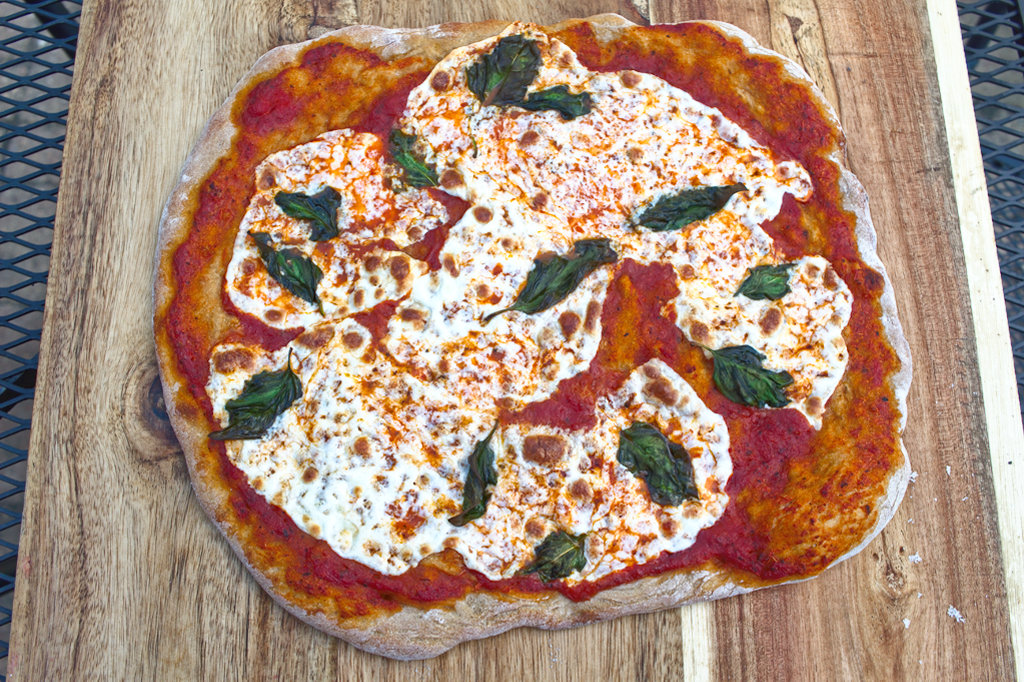
The Tribunal has a long history with the Caprese sandwich as well. The very first sandwich I wrote about on this site 6 years ago wasn’t called a Caprese, but that’s what it was. Or at least J.P. Graziano‘s burrata & heirloom tomato sandwich would have qualified as a Caprese sandwich if I hadn’t asked for all that prosciutto to be added.
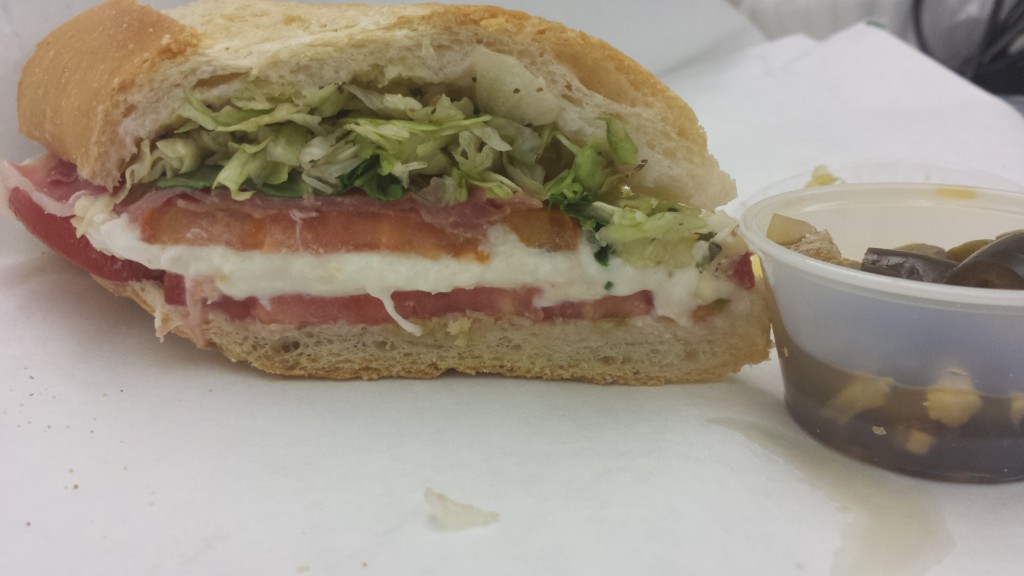
It’s also the sandwich I chose to celebrate the website’s 5th birthday last year. Though J.P. Graziano doesn’t use the burrata anymore, instead making a seasonal salad or sandwich for the month of August that uses fresh bufala mozzarella in addition to some incredible farmer’s market tomatoes.
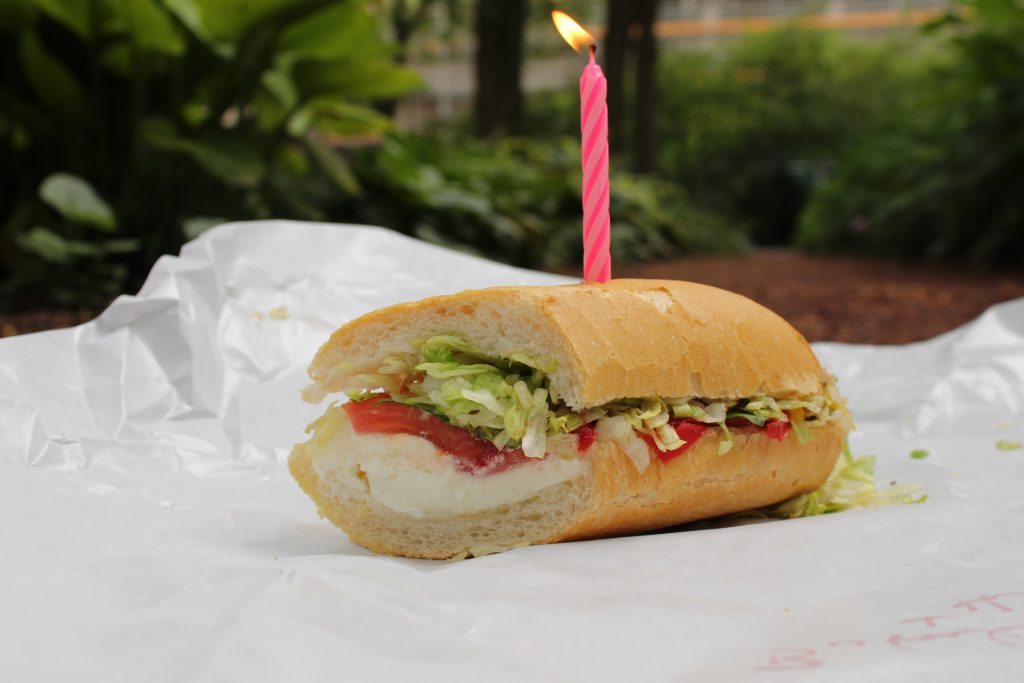
And even though the sandwich has been quite thoroughly covered here, I didn’t hesitate to pick one up this month as well. The tomatoes are as good as ever, and the mozzarella as creamy and flavorful. The aromatic fresh basil brings those ingredients together, and the lightly dressed lettuce adds a little texture and flavor. This is one of the great sandwiches, and I’ll eat at least one every August as long as JPG keeps offering them.

Bufala mozzarella and heirloom tomato Caprese from J.P. Graziano 
Bufala mozzarella and heirloom tomato Caprese from J.P. Graziano
The American version of the Caprese salad introduced balsamic vinegar to the equation, and our sandwiches often follow suit, sometimes disastrously. This month I tried one really really bad Caprese sandwich, sold by a chain “bakery” as their “Modern Caprese” sandwich. Far from the simple combination of three ingredients, this version of the sandwich really tried to chef it up: “Basil-white bean puree, sliced mozzarella, parmesan, arugula, smoked tomato confit, fresh basil, balsamic glaze, salt and pepper, toasted on black pepper focaccia.”
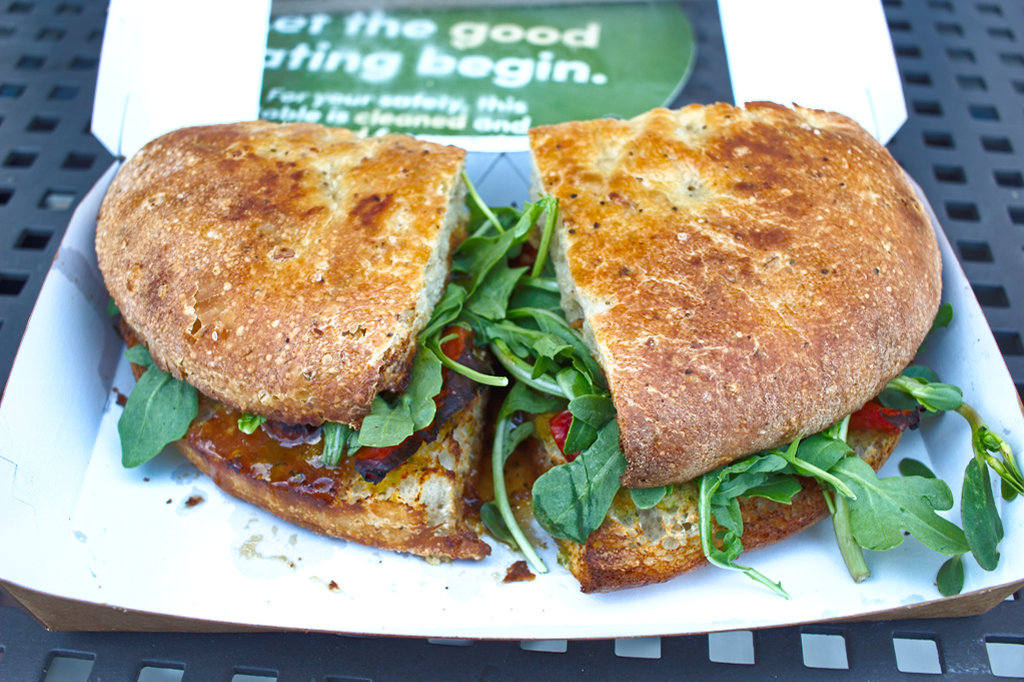
I’ll start with the good: the bread was decent, a good thing to be able to say for a place with the word “bread” in its name. Unfortunately, despite all those ingredients listed there, the only thing I could taste in this sandwich was the balsamic glaze, and sadly, it was not a good one.
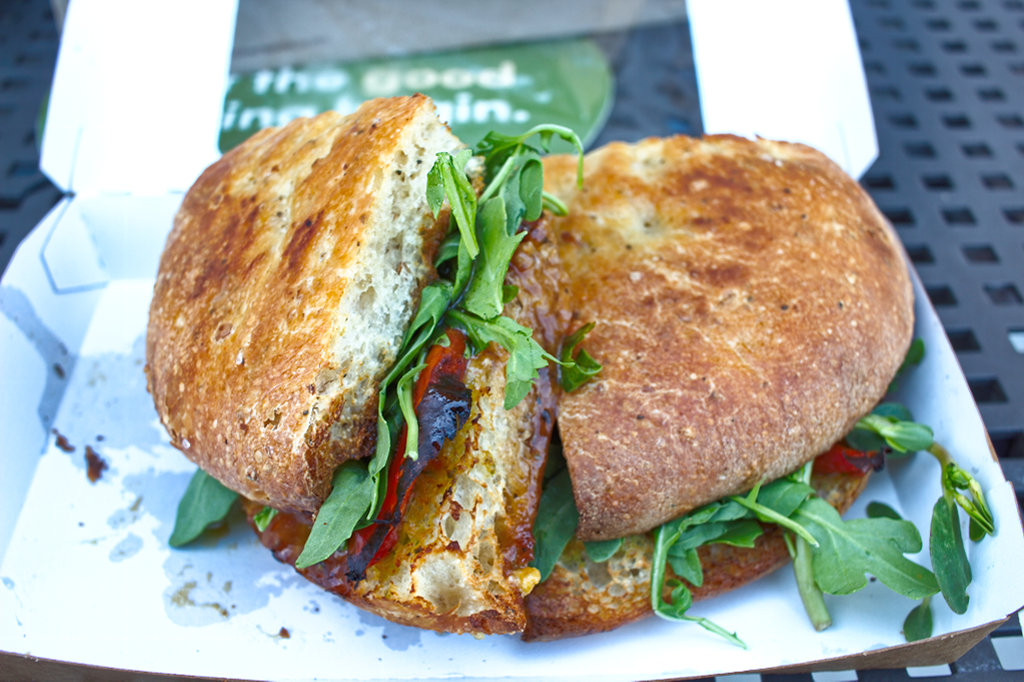
Ideally, a balsamic glaze should have one ingredient: balsamic vinegar. The vinegar is reduced to thicken it, concentrating and intensifying both the sweet aspects of its flavor and the tart, vinegary side. Unfortunately, some places shortcut this by adding sugars to their balsamic glazes, resulting in a syrupy mess suitable for drizzling on ice cream. Panera Bread‘s balsamic glaze is the sweetest I’ve tasted, and the otherwise good bread was absolutely soaked in the stuff.
The sandwich can be made successfully with variants though. On our recent road trip to Washington, Mindy and I stopped one evening to eat dinner at a restaurant called Stacked, A Montana Grill in Billings MT.
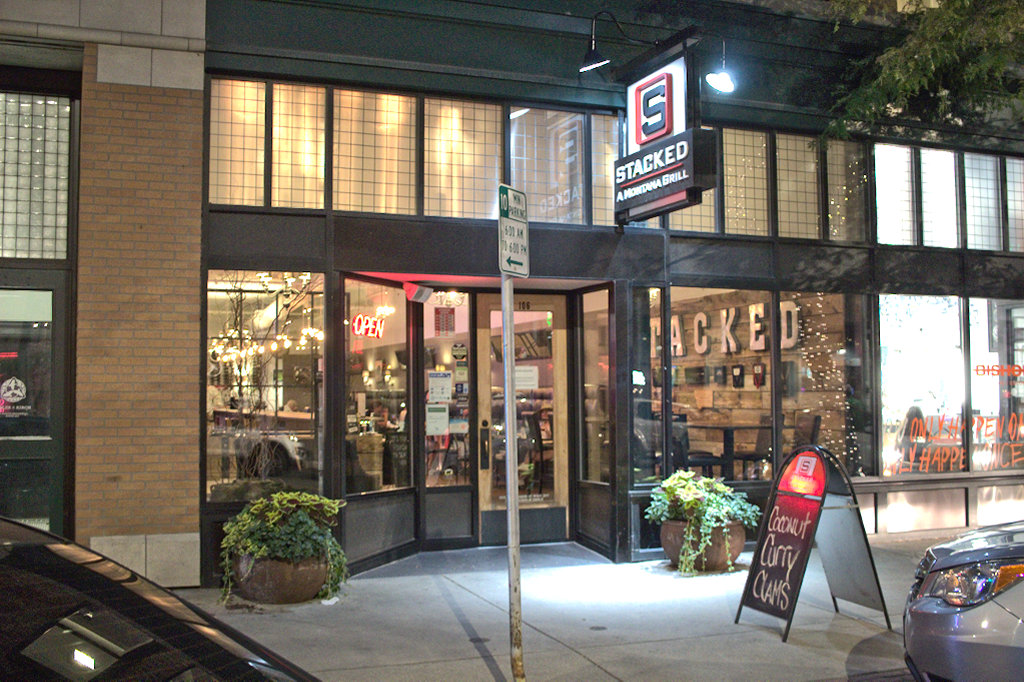
I had picked the place out because they had not only a Caprese grilled cheese sandwich on the menu, but also a Caprese burger. To get Mindy to agree to eat there with me, though, I needed to sweeten the pot. Turns out they had fried green tomatoes on the menu, her favorite.
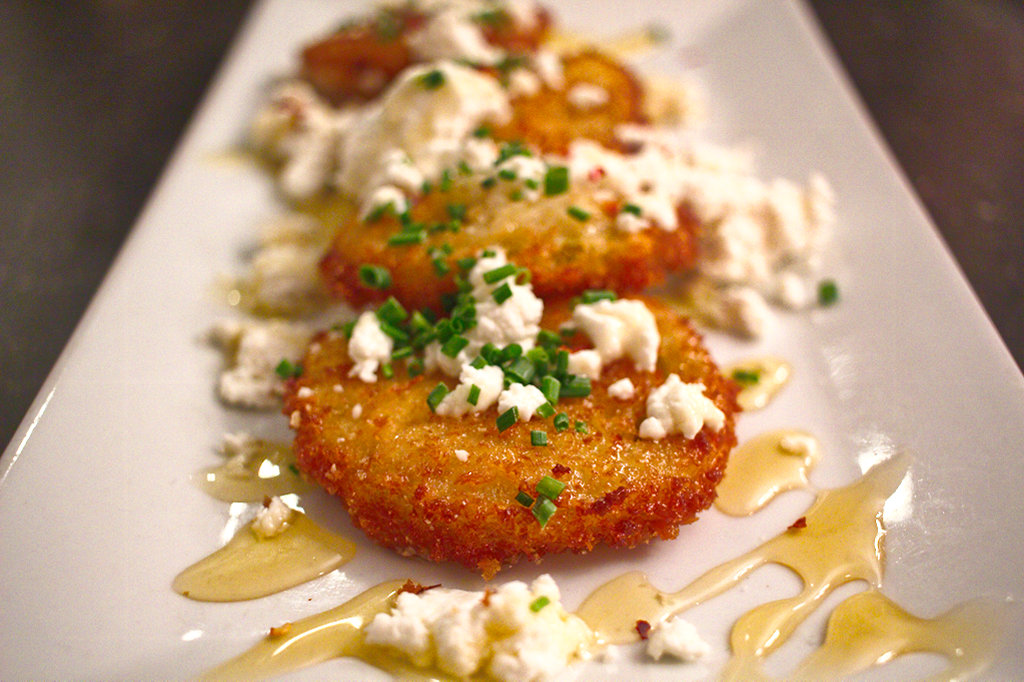
Of course that was only her appetizer. Her main course was a beautiful salad featuring blueberries, bacon, and bleu cheese with salad greens, red onions, and candied pecans dressed slightly excessively with a blackberry jalapeño vinaigrette dressing. It all worked together better than it had any right to.
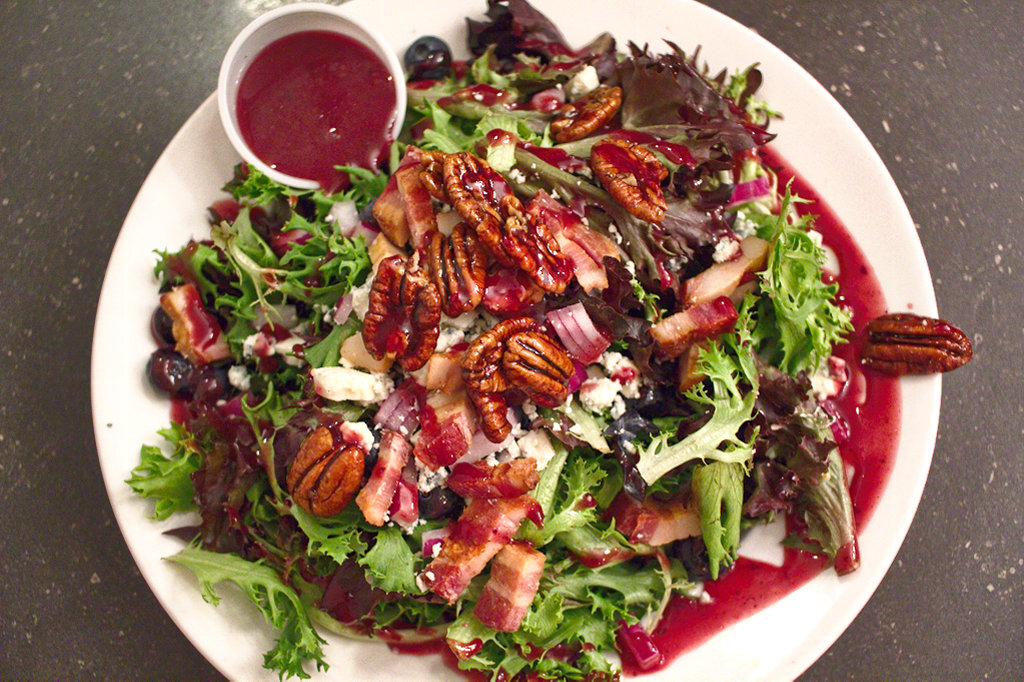
I suppose I could have skipped an appetizer and instead ordered both the Caprese grilled cheese and the Caprese burger. Part of me wanted to. The other part of me saw the brisket nachos on the menu and overpowered Caprese burger guy who was never heard from again. The brisket nachos had a bit of the issue I’ve experienced with other BBQ/nachos mashups—the too-sweet sauce from the barbecue side of things clashing with the ultra savory nacho cheese—but this brisket was only very lightly dressed with sauce and the nachos were a delight.
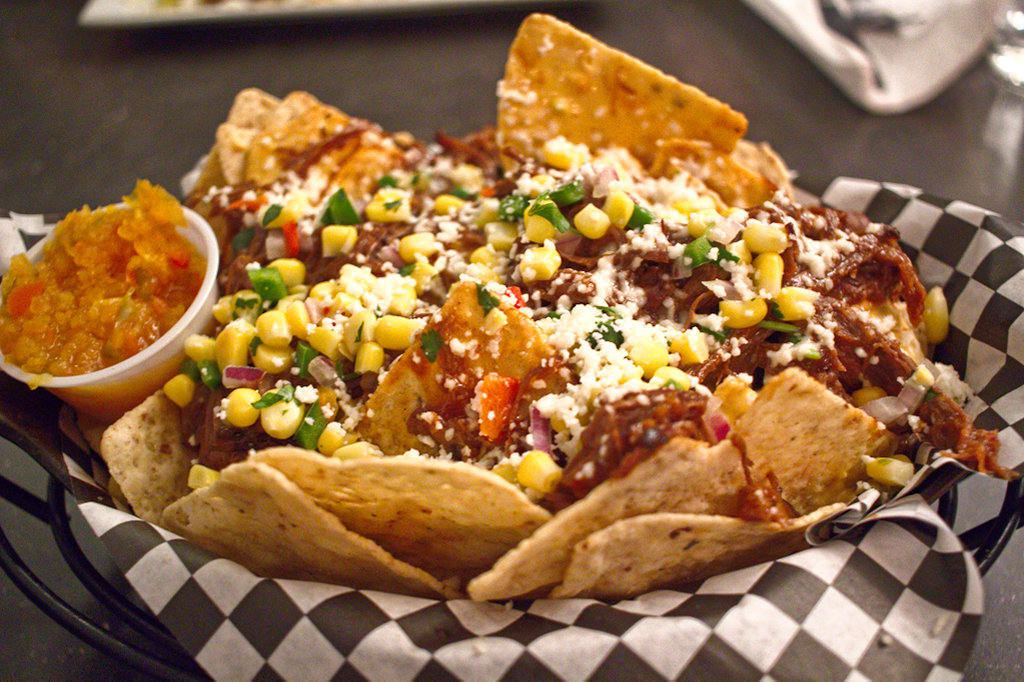
As for the sandwich that brought me there, it was better than it looked. Like many American Caprese sandwiches, this one used pesto sauce rather than fresh basil, and it added thick-cut bacon in addition to the requisite balsamic glaze. The bacon does distract from the “caprese-ness” of the sandwich, but it’s such a winning combination in a hot sandwich with fresh tomatoes and melty cheese that I couldn’t help but be charmed by it.
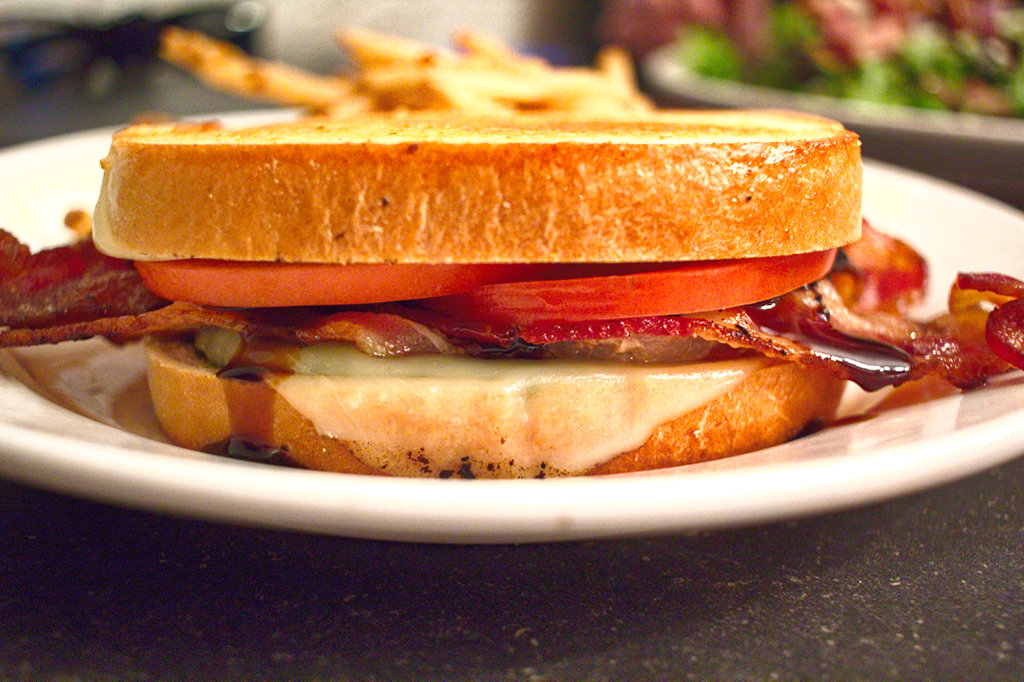
The bacon was cooked just right—not too crisp nor too limp—and fairly thoroughly glued into the sandwich by the melted mozzarella. The pesto seasoned the cheese, while the balsamic glaze brightened the tomatoes. It was a good sandwich, even if it didn’t photograph terribly well.
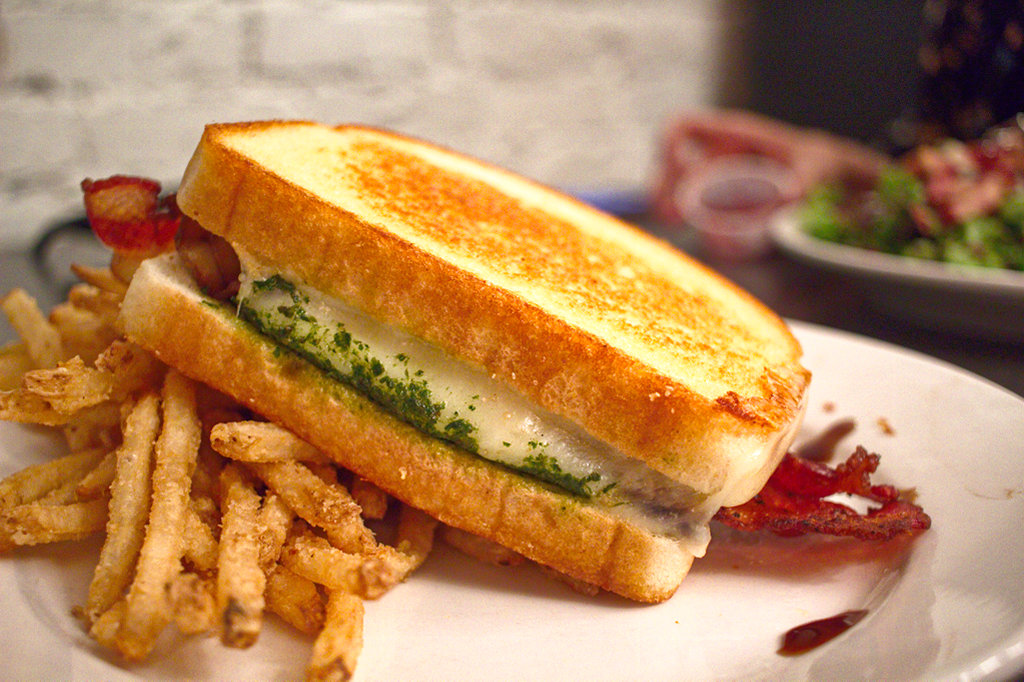
It makes me wonder how well a hybrid Caprese/BLT would work out. Well, it’s August. No better time than now to make it.
More locally, as I searched for notable Caprese sandwiches in the area, I found more than one reference to an “amazing” Caprese at a bakery / sandwich maker in Lemont, Illinois, a southwest suburb sitting on the confluence of Cook, Will, and DuPage counties. The place was only open until 3pm daily and about a 30 minute drive away from home so I bided my time, chose my moment carefully, and dashed over to Rustic Knead in Lemont for lunch one day.

Rustic Knead 
Decor at Rustic Knead
Rustic Knead’s Caprese comes on either a “Rustic” (white) baguette or a multigrain seeded baguette, cut into an 8” length, split in half, and filled with pesto, fresh mozzarella, tomato, arugula, balsamic drizzle, and several slices of avocado.
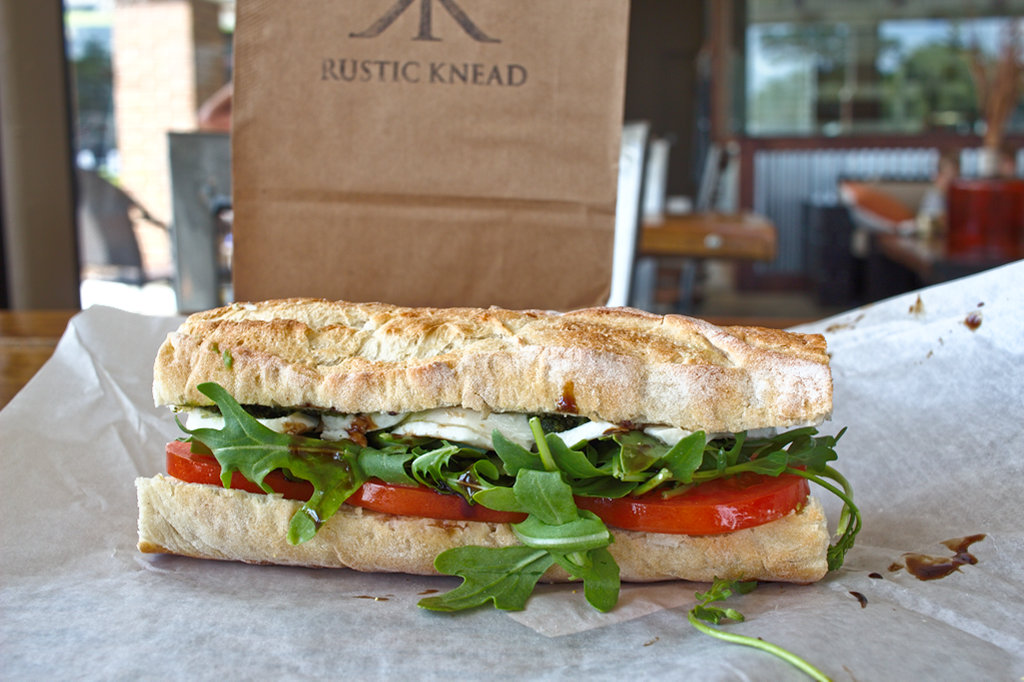
The avocado here is a brilliant addition. It adds a little substance, a little fat to the sandwich, making it more filling, with the avocado taking the place of a condiment like butter or mayonnaise and making the bread more easily chewable, but also being delicious and healthy by way of being avocado. There wasn’t a lot of it—three somewhat thin slices per sandwich—but it was enough. This is a great, if somewhat nonstandard Caprese sandwich.
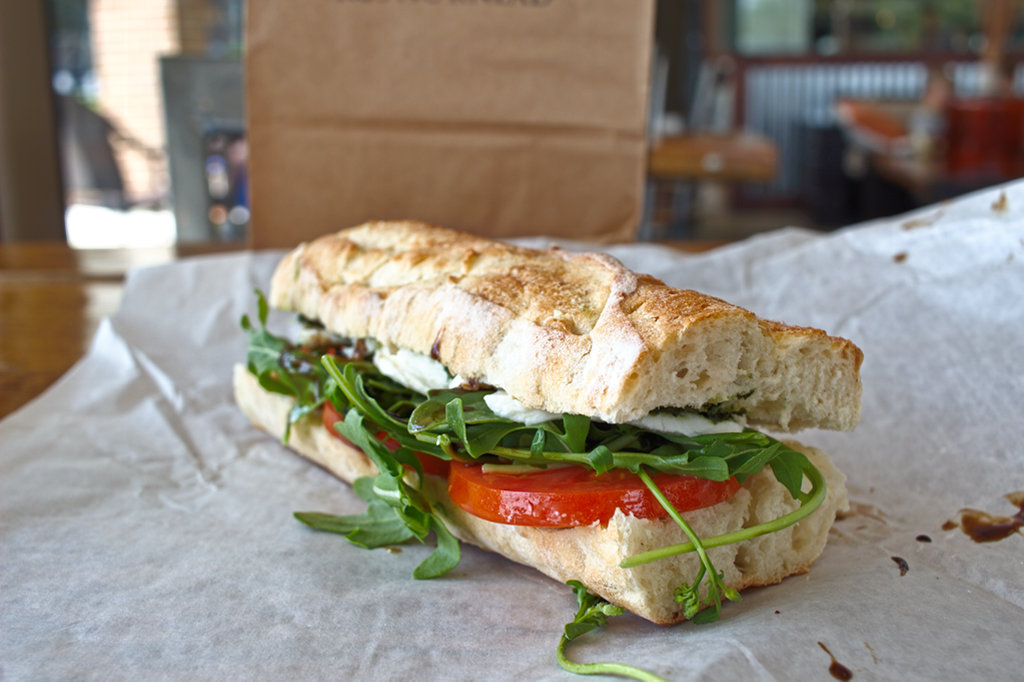
Critical Self Caprese-al
I haven’t quite gotten around to putting together my Frankenstein Caprese BLT yet this month. Instead, I tried to make as classic a Caprese as I could, as “from scratch” as I could. Turning to the book The Italian Baker by Carol Field, I leafed through looking for a semi-rustic loaf that could be sliced to make a good sandwich. I found it in Pan Bigio.
A hand-shaped wheat bread, Field’s Pan Bigio recipe uses a biga or pre-ferment, allowing for additional flavor to develop while still making for a manageable bake day. The dough is a wet one and difficult to manage—and the recipe makes a lot of it—so this was my second loaf with the same batch. The first loaf taught me a lot about how to shape such a wet dough, but the additional day between the first bake and the second made for less of a rise in the finished bread. Rather than slashing the taut smooth surface of the shaped dough to channel and manage oven spring, the Pan Bigio recipe calls for inverting the shaped ball onto the baking stone so that the rougher gathered-together bottom surface of the dough becomes the loaf’s top. It makes for an interesting looking loaf.
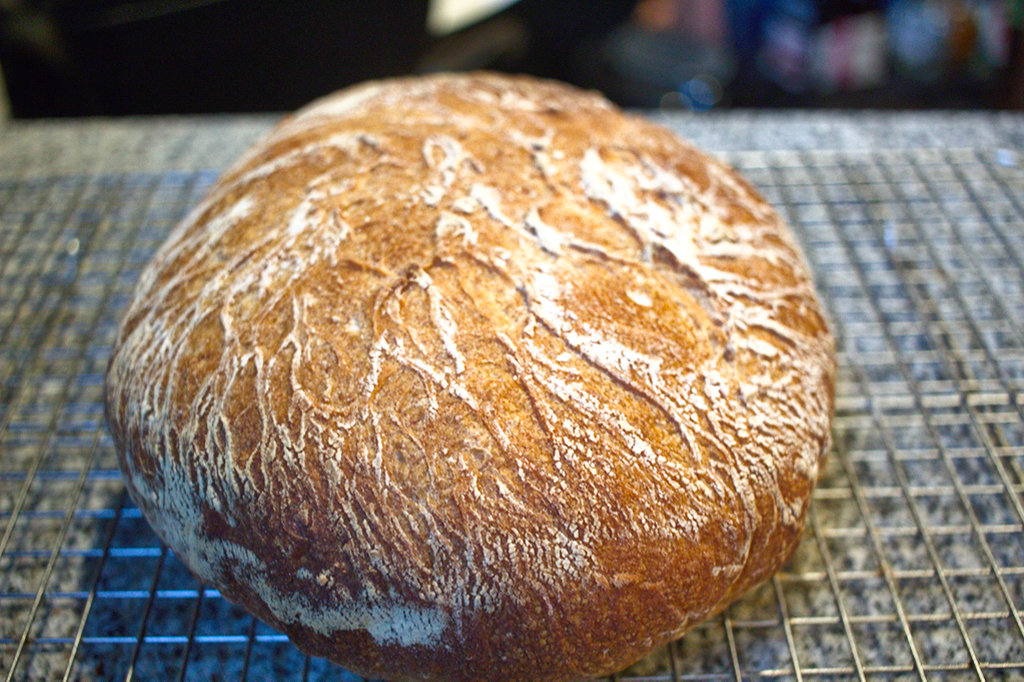
In addition to the homemade bread, I would be using tomatoes and basil from my own garden
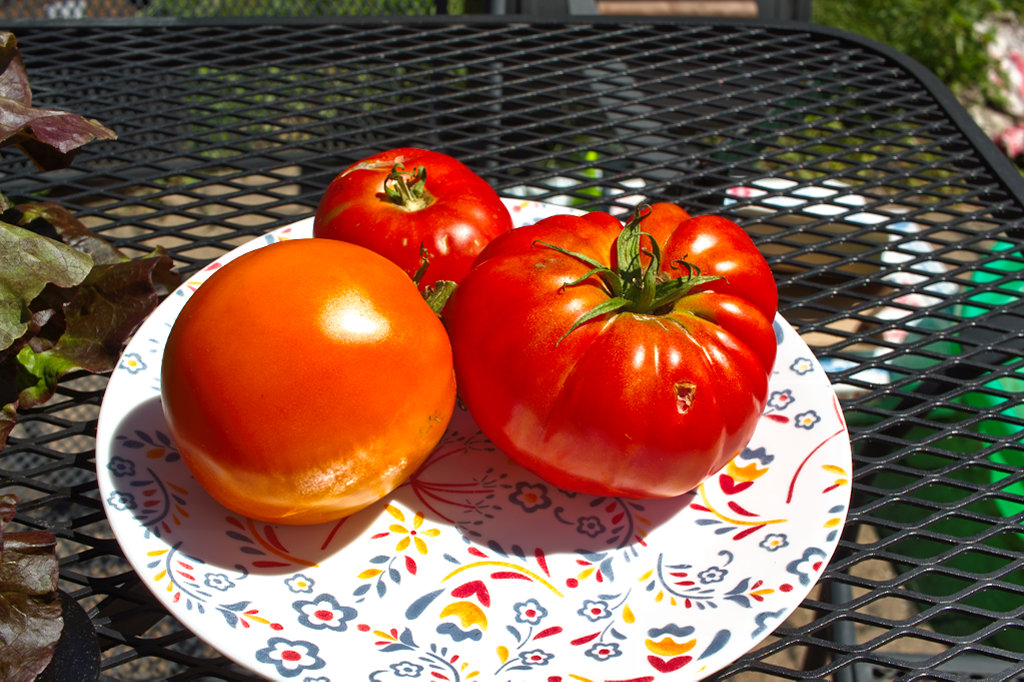
I even made my own fresh mozzarella, which is easier than you think it’ll be, even if you should be wary of the sites claiming it can be done in under 30 minutes.
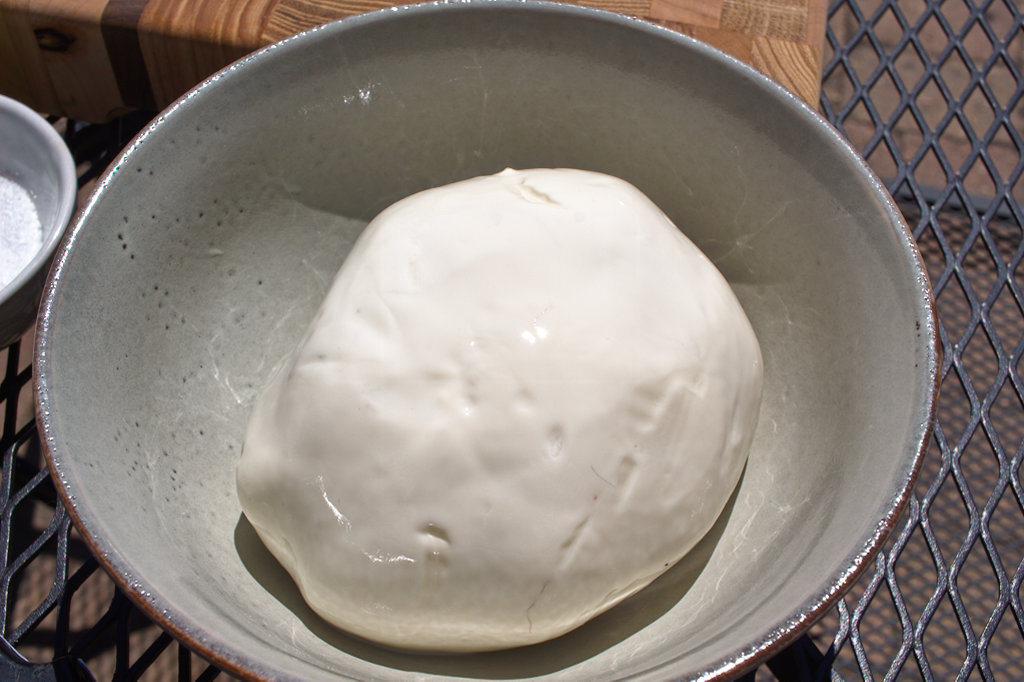
I chose both red beefsteak and golden jubilee tomatoes for the sandwich. I also backed off my original plan to use only things I’d made or grown myself in the sandwich, and bought a nice head of red leaf lettuce.
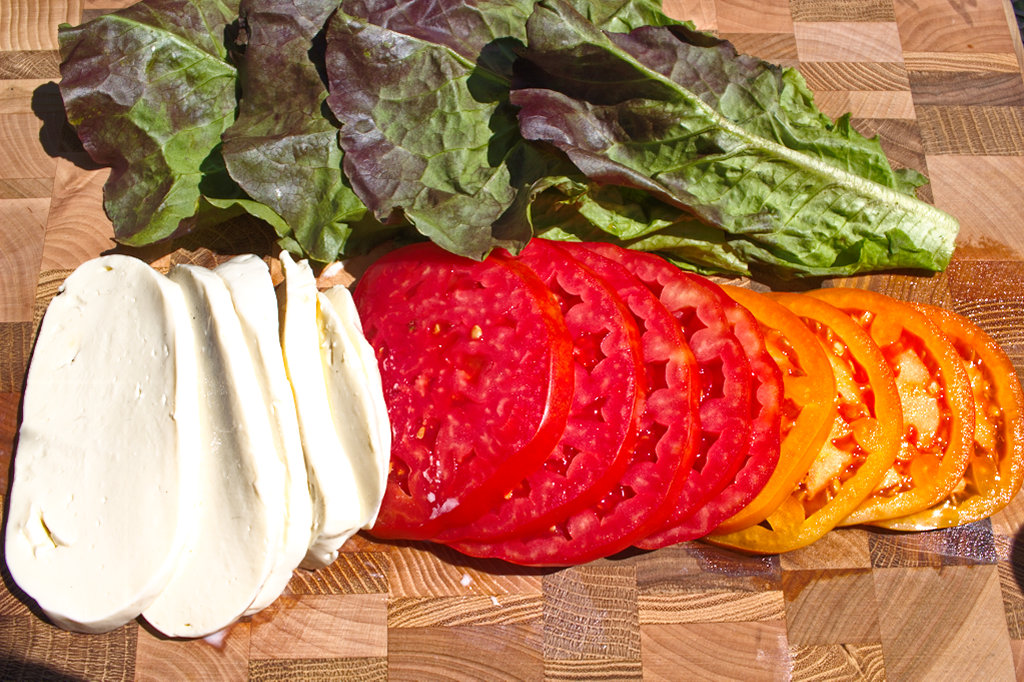
I also chose to dress the sandwich with a little salt, olive oil, and balsamic vinegar.
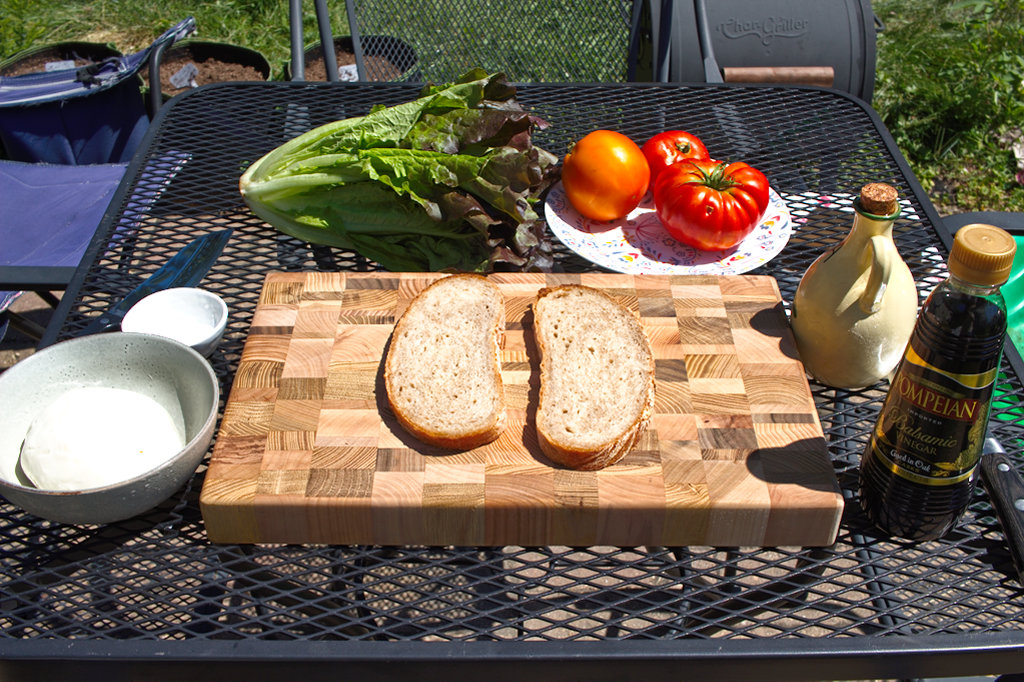
I started by drizzling a little extra virgin olive oil on one slice of bread. It’s a practice I’ve seen in some other Italian sandwiches, and it adds some nice flavor to the bread as well as helping keep things lubricated.
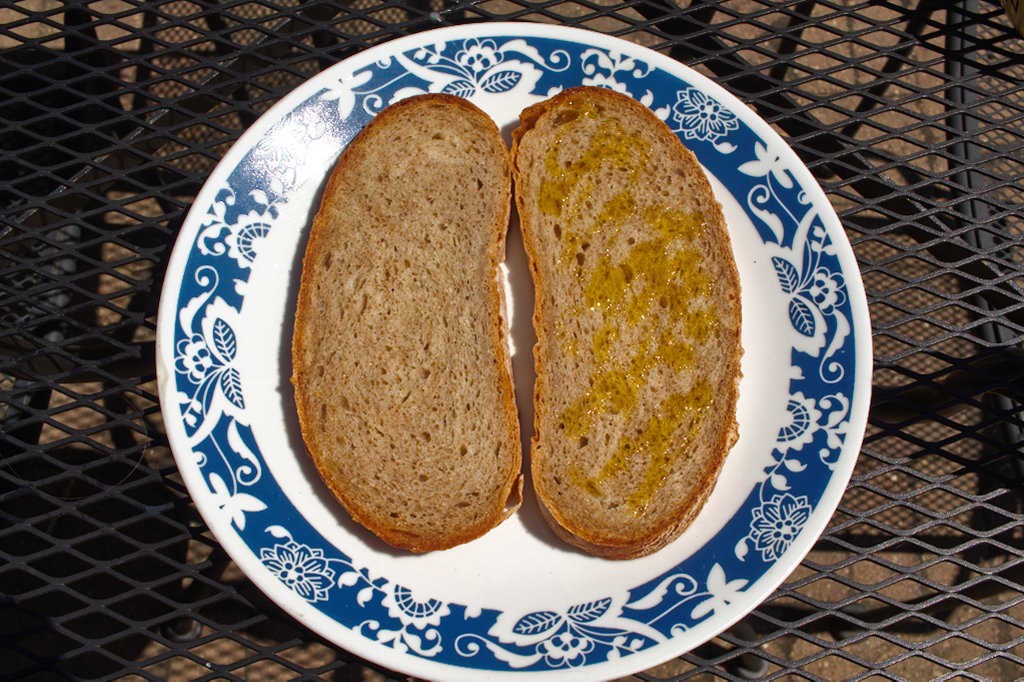
Then I added the lettuce, fresh mozzarella, and some balsamic vinegar. A note on balsamic vinegar: it doesn’t drizzle as prettily as a balsamic glaze would have.
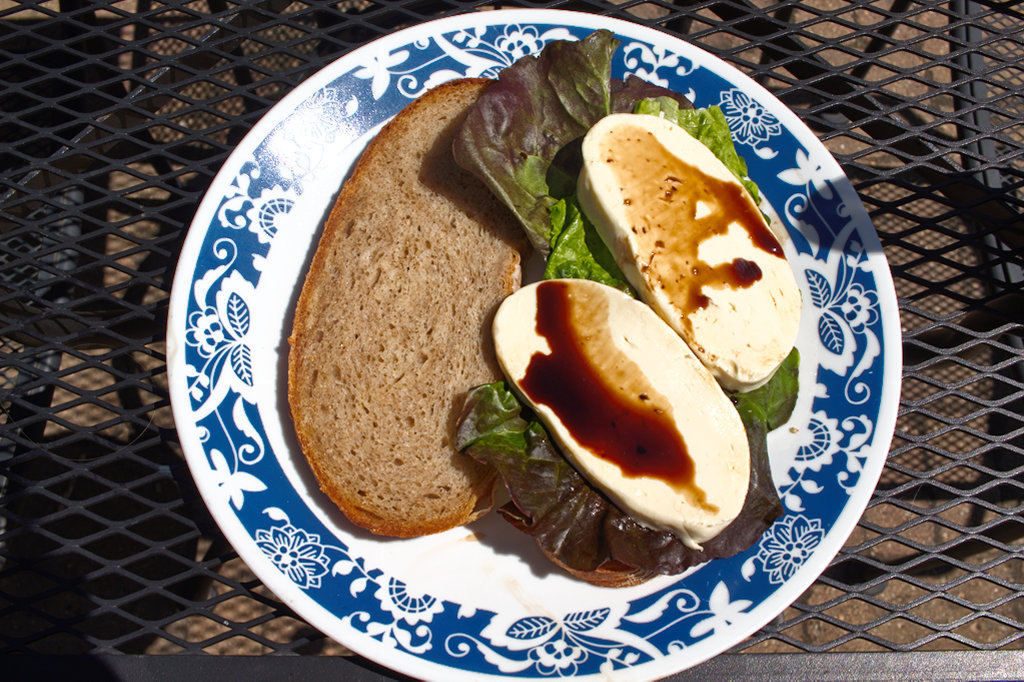
Then I added tomatoes. I wanted to use both red and gold tomatoes and not alternate between bites, so I sliced them just a little thinner than you might otherwise want your Caprese tomatoes to be, and just made a full layer of each.
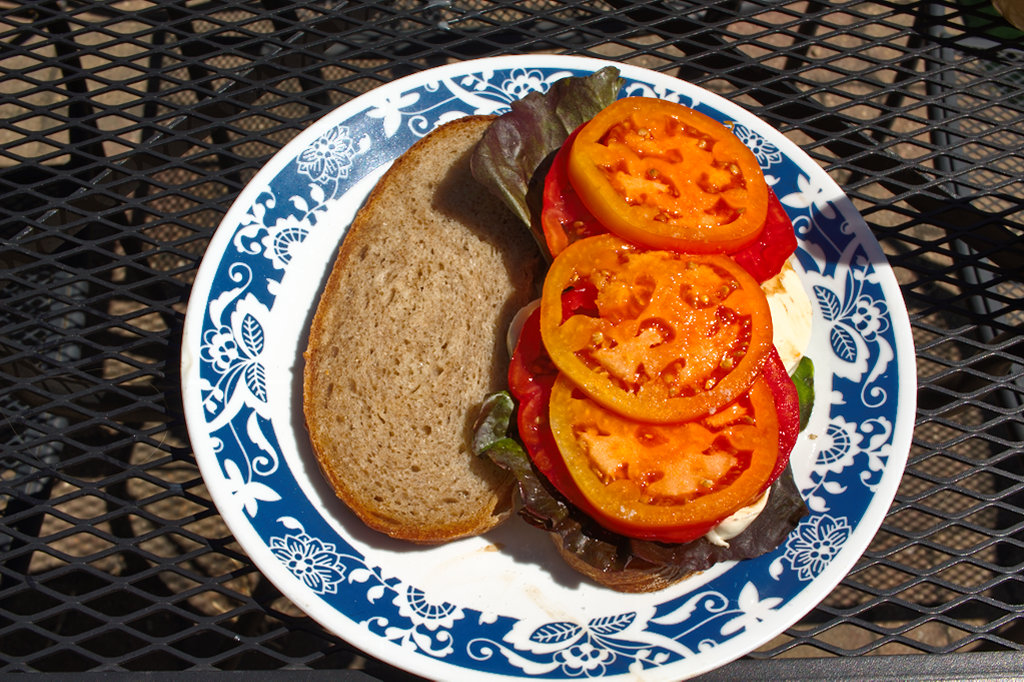
Then I retrieved some basil leaves from our basil plants. I’d taken a look that morning, and the basil, which shares a pot with some lemongrass, had a slightly withered, wilted look, certainly nothing I’d want to put on a sandwich and then photograph. I watered the plants and by lunchtime they had perked right up. Resilient plant, basil.
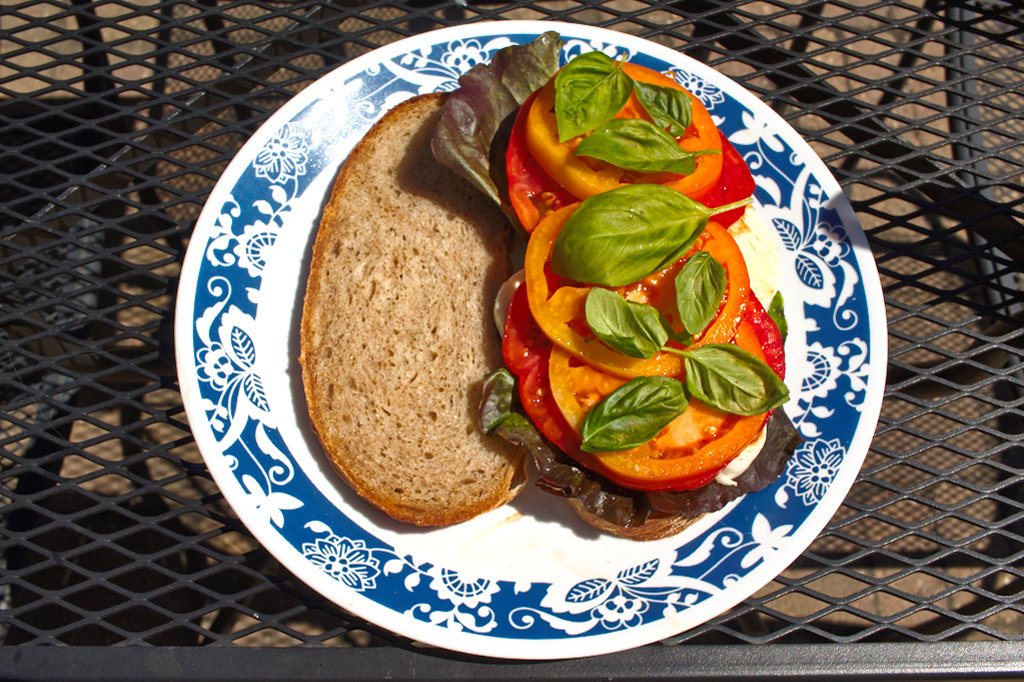
And that’s the sandwich! The classic Caprese, or my Americanized version of it anyway, is a quite simple sandwich. Good tomatoes—delicious, August tomatoes fresh from a garden or a farmer’s market, the best tomatoes you can find. Fresh mozzarella, or something even more interesting such as bufala mozzarella or a burrata if you can find it. Basil. Good bread. The lettuce isn’t really necessary, though the olive oil and balsamic vinegar are nice additions.



If you live in the Midwest like I do, you’ve got about another month, month-and-a-half to get the good tomatoes. You want this sandwich. If you think a cheese and tomato sandwich won’t fill you up—well, maybe you’re right. You can always stick some bacon in there.

I like sandwiches.
I like a lot of other things too but sandwiches are pretty great


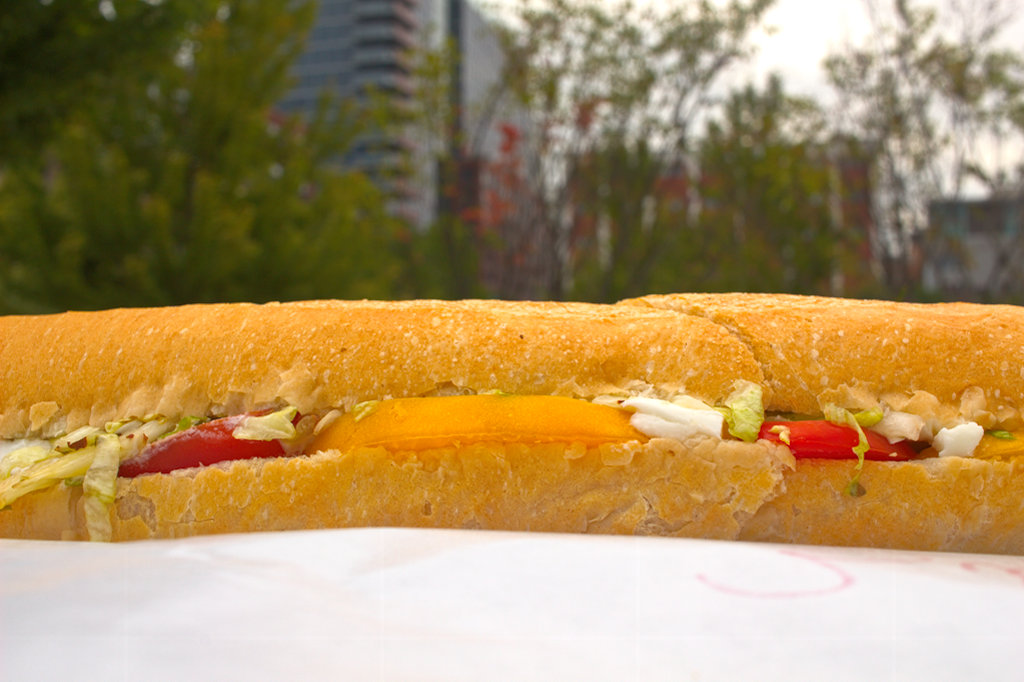
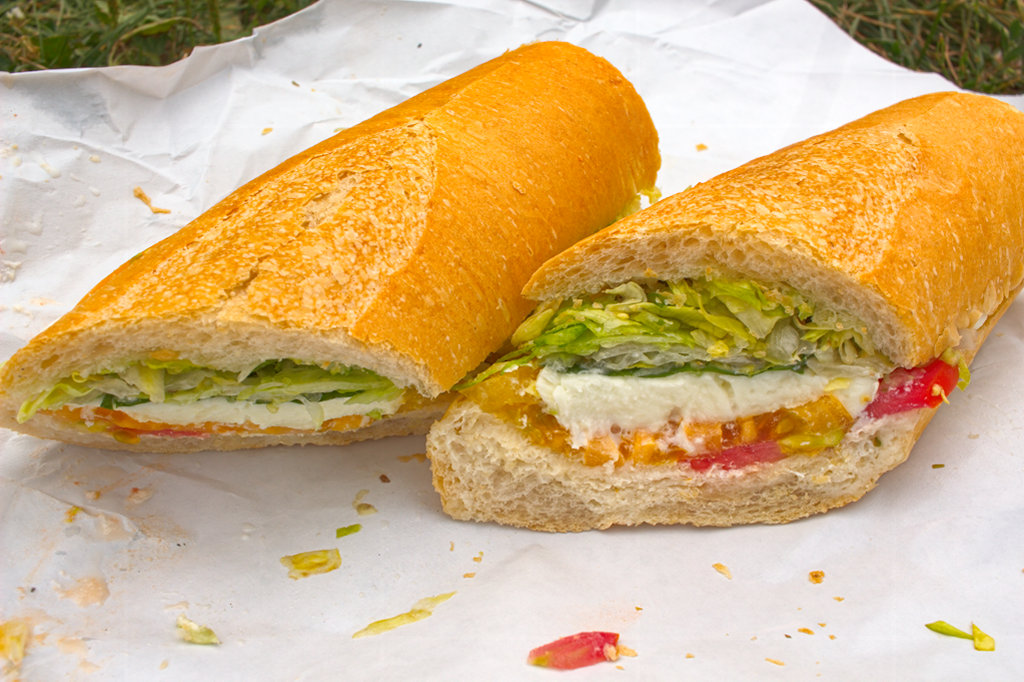

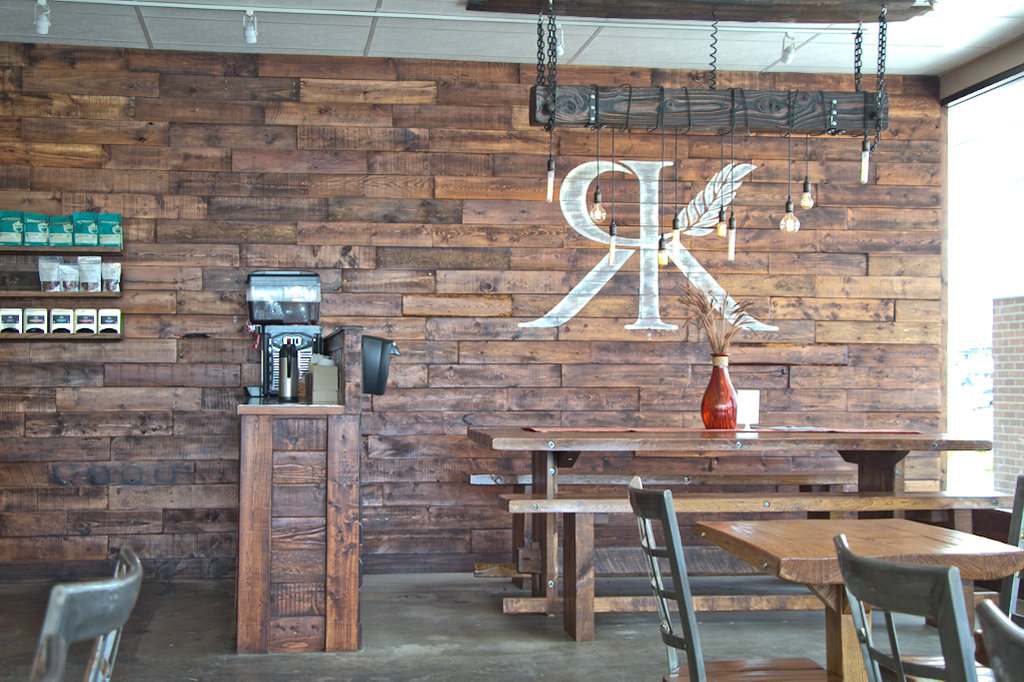









Recent Comments